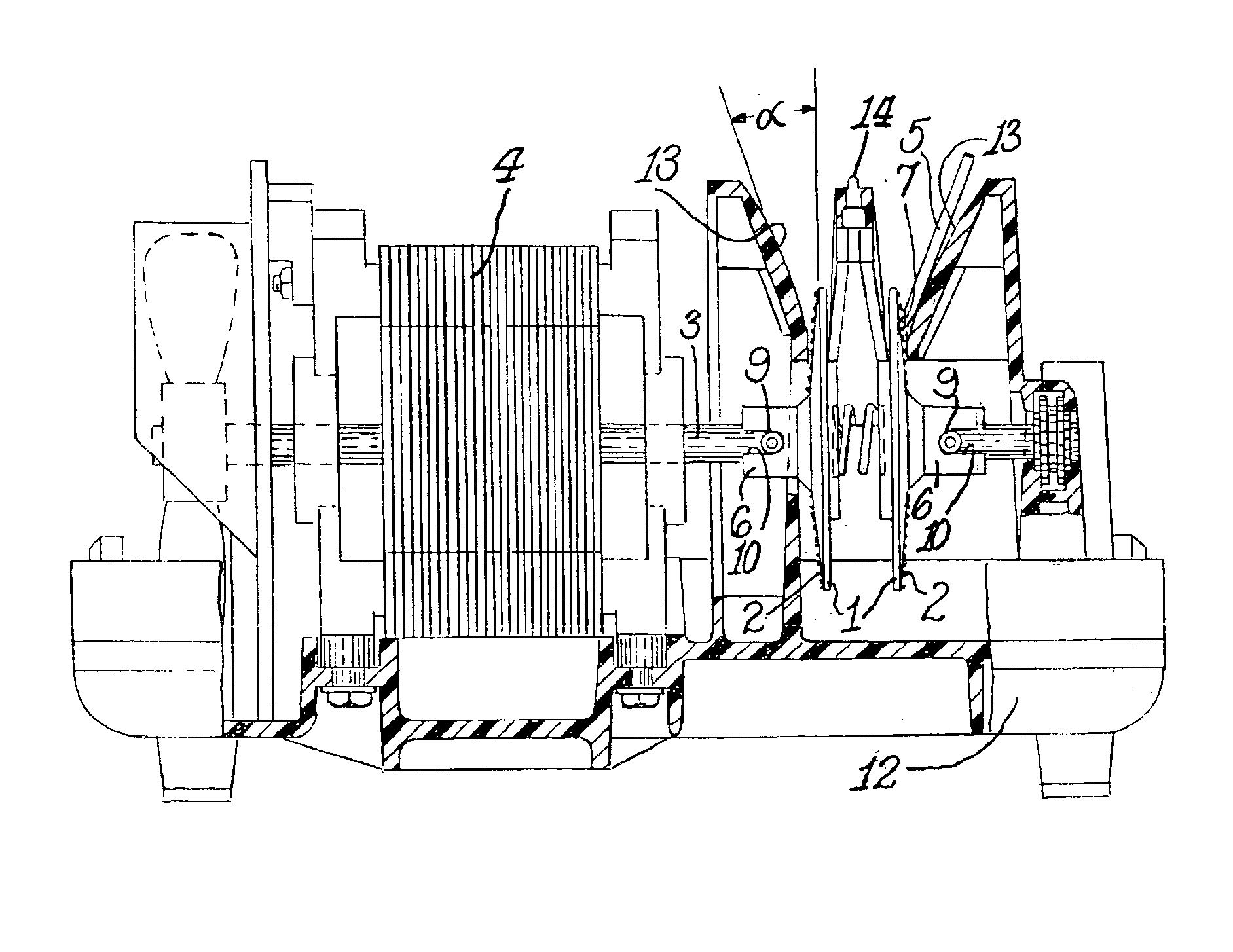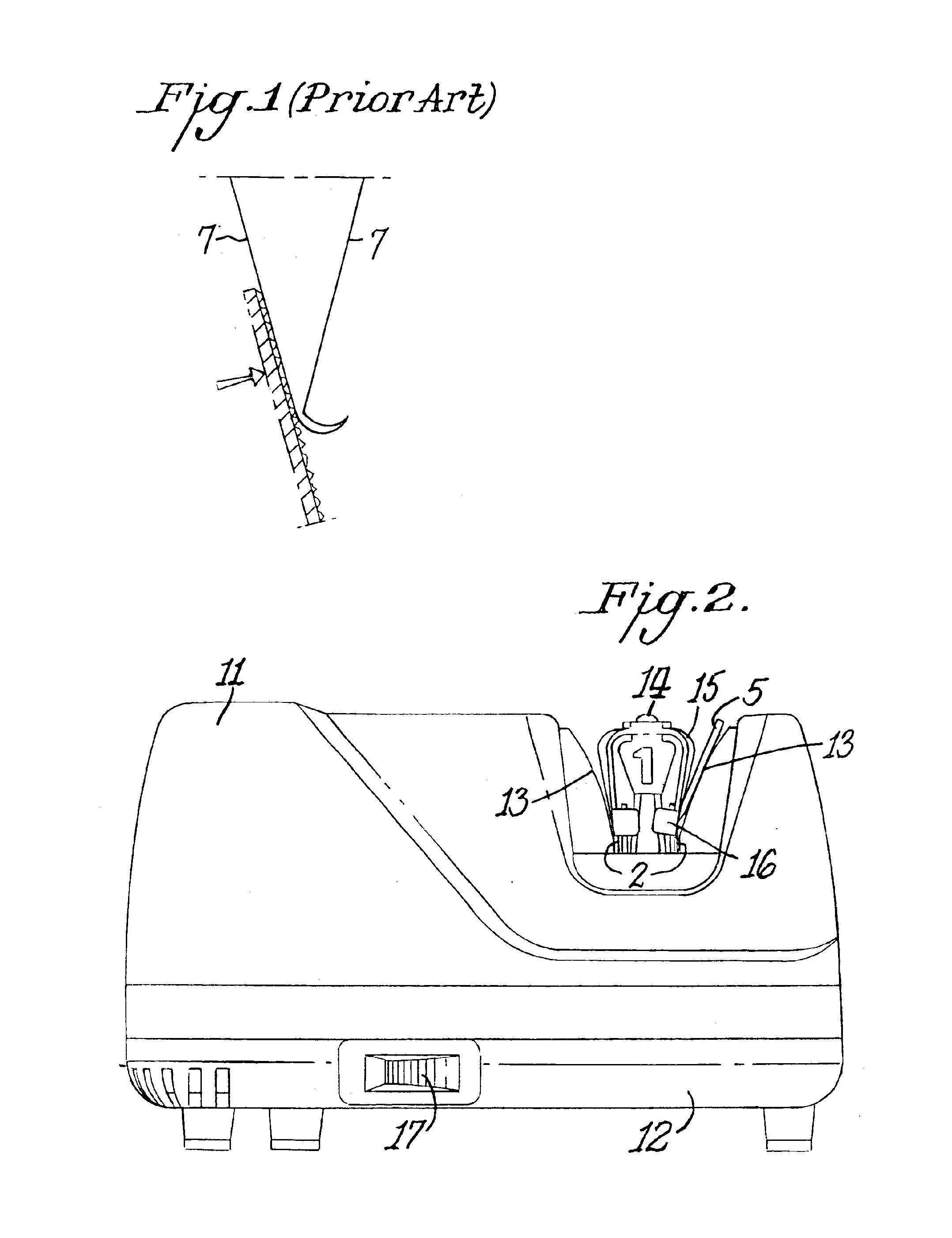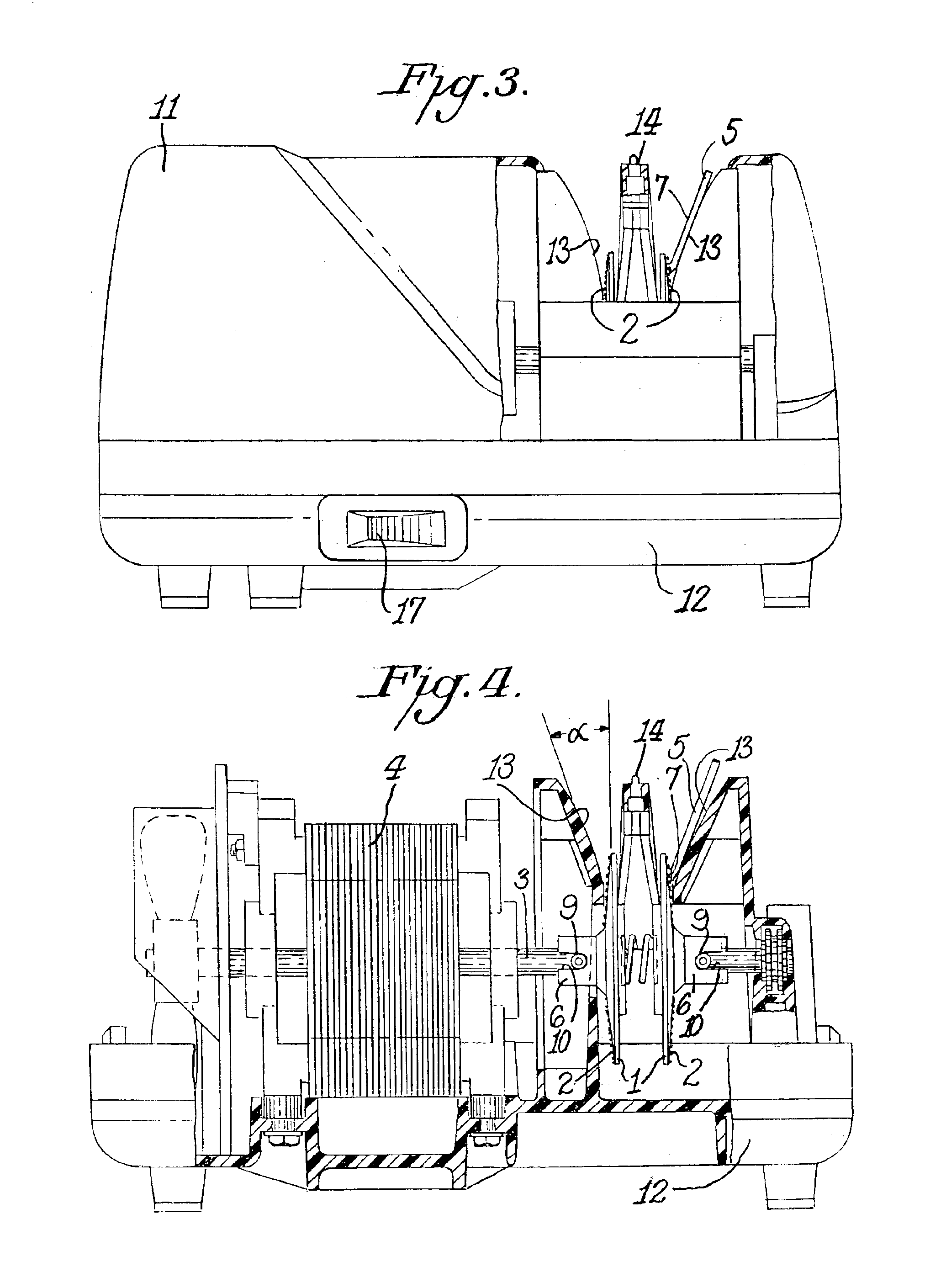Sharpening device
a technology of sharpening device and blade, which is applied in the direction of edge grinding machine, other manufacturing equipment/tools, manufacturing tools, etc., can solve the problems of unsupported thin edge created by the intersection of the facets, inability to physically resist the force being applied, and relatively dull blade consequently, so as to reduce the size of the resulting burr at the edge of the blade, the effect of reducing the spring force and high effective
- Summary
- Abstract
- Description
- Claims
- Application Information
AI Technical Summary
Benefits of technology
Problems solved by technology
Method used
Image
Examples
Embodiment Construction
One physical arrangement for a sharpener that has proved effective for sharpening with ultra fine abrasives is shown by way of example in FIG. 4 in cut-away form. Two sharpening disks 1 with abrasive coated surfaces 2 are mounted on shaft 3 driven by an electrical motor 4. The disks 1 made of a metal stamping formed to present a uniform surface of rotation to the edge facet 7 of a knife 5 being shaped by contact with the abrasive surface 2 are mounted on hubs 6 which are driven by shaft 3. The hubs 6 each have a central cylindrical bore hole that is sufficiently larger than the diameter of the shaft 3 to allow the mounted disk 1 to be physically displaced when the knife edge facet 7 contacts the abrasive surface 2 of the disk. A compression spring 8 mounted between the disks 1 forces the disks to return to a rest position that is precisely established by drive pins 9 that are secured to rotate with shaft 3 and of a diameter that fits with clearance in the slot 10 of hubs 6. The term...
PUM
| Property | Measurement | Unit |
|---|---|---|
| Mass | aaaaa | aaaaa |
| Diameter | aaaaa | aaaaa |
| Diameter | aaaaa | aaaaa |
Abstract
Description
Claims
Application Information
 Login to View More
Login to View More - R&D
- Intellectual Property
- Life Sciences
- Materials
- Tech Scout
- Unparalleled Data Quality
- Higher Quality Content
- 60% Fewer Hallucinations
Browse by: Latest US Patents, China's latest patents, Technical Efficacy Thesaurus, Application Domain, Technology Topic, Popular Technical Reports.
© 2025 PatSnap. All rights reserved.Legal|Privacy policy|Modern Slavery Act Transparency Statement|Sitemap|About US| Contact US: help@patsnap.com



